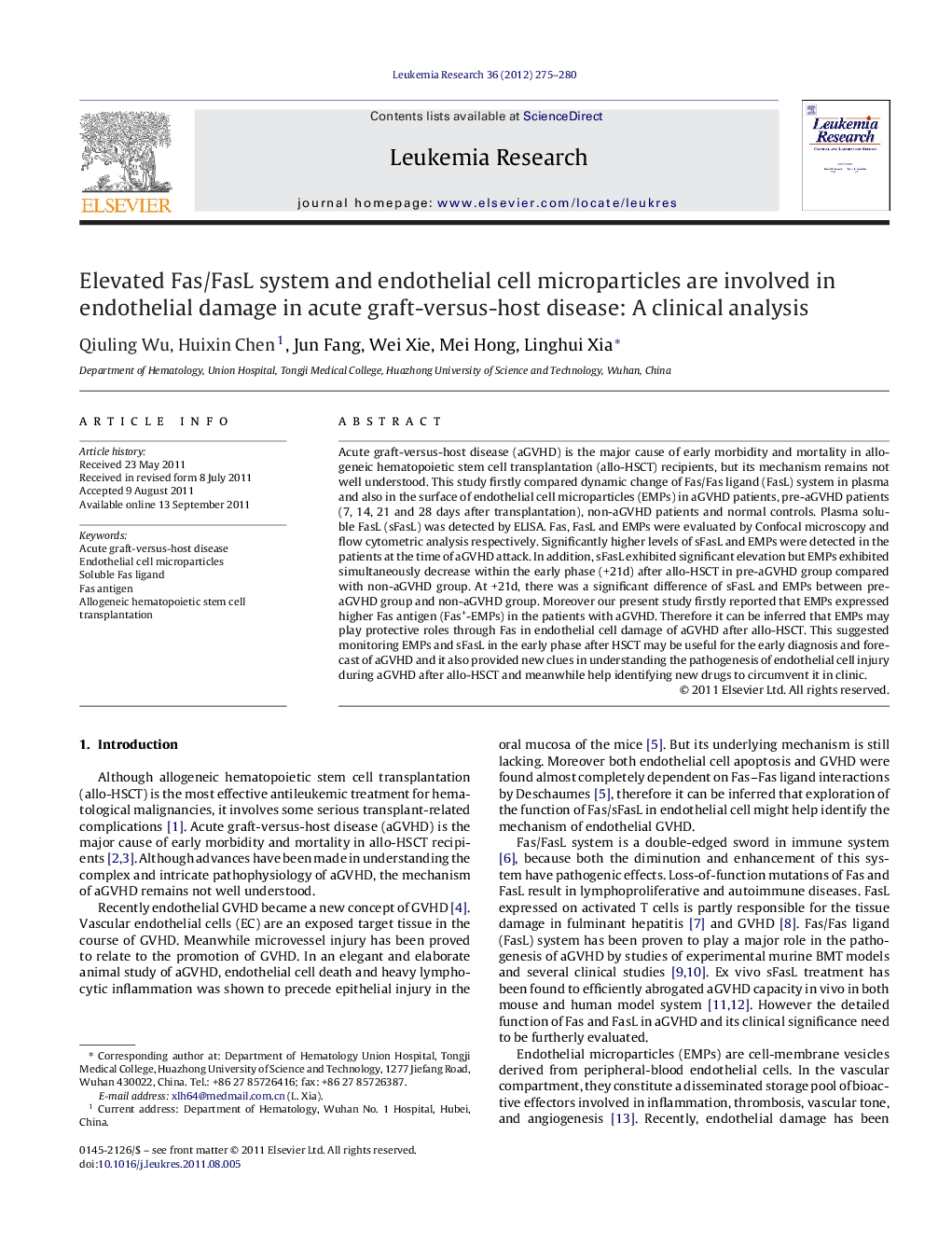| Article ID | Journal | Published Year | Pages | File Type |
|---|---|---|---|---|
| 10909178 | Leukemia Research | 2012 | 6 Pages |
Abstract
Acute graft-versus-host disease (aGVHD) is the major cause of early morbidity and mortality in allogeneic hematopoietic stem cell transplantation (allo-HSCT) recipients, but its mechanism remains not well understood. This study firstly compared dynamic change of Fas/Fas ligand (FasL) system in plasma and also in the surface of endothelial cell microparticles (EMPs) in aGVHD patients, pre-aGVHD patients (7, 14, 21 and 28 days after transplantation), non-aGVHD patients and normal controls. Plasma soluble FasL (sFasL) was detected by ELISA. Fas, FasL and EMPs were evaluated by Confocal microscopy and flow cytometric analysis respectively. Significantly higher levels of sFasL and EMPs were detected in the patients at the time of aGVHD attack. In addition, sFasL exhibited significant elevation but EMPs exhibited simultaneously decrease within the early phase (+21d) after allo-HSCT in pre-aGVHD group compared with non-aGVHD group. At +21d, there was a significant difference of sFasL and EMPs between pre-aGVHD group and non-aGVHD group. Moreover our present study firstly reported that EMPs expressed higher Fas antigen (Fas+-EMPs) in the patients with aGVHD. Therefore it can be inferred that EMPs may play protective roles through Fas in endothelial cell damage of aGVHD after allo-HSCT. This suggested monitoring EMPs and sFasL in the early phase after HSCT may be useful for the early diagnosis and forecast of aGVHD and it also provided new clues in understanding the pathogenesis of endothelial cell injury during aGVHD after allo-HSCT and meanwhile help identifying new drugs to circumvent it in clinic.
Keywords
Related Topics
Life Sciences
Biochemistry, Genetics and Molecular Biology
Cancer Research
Authors
Qiuling Wu, Huixin Chen, Jun Fang, Wei Xie, Mei Hong, Linghui Xia,
